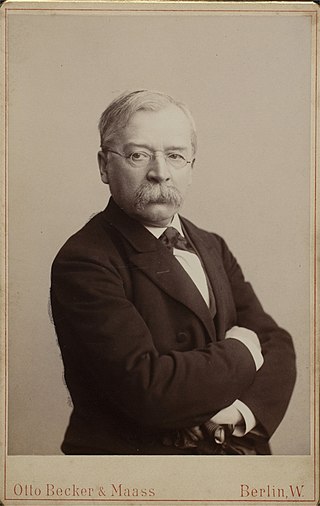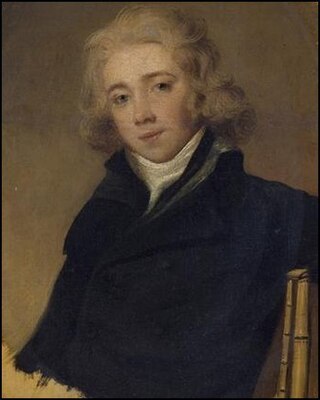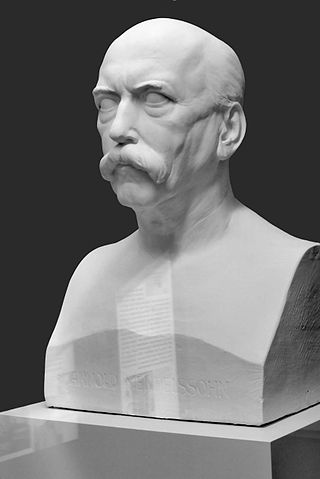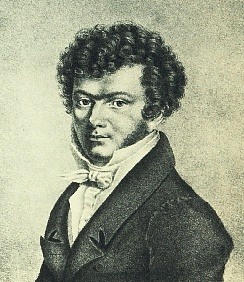
The Cello Sonata No. 3 in A major, Op. 69, is the third of five cello sonatas by Ludwig van Beethoven. He composed it in 1807–08, during his productive middle period. It was first performed in 1809 by cellist Nikolaus Kraft and pianist Dorothea von Ertmann, a student of Beethoven. Published by Breitkopf & Härtel the same year, it was dedicated to Freiherr Ignaz von Gleichenstein, Beethoven's friend and an amateur cellist. The sonata was successful with audiences from the beginning.

Woldemar Bargiel was a German composer and conductor of the Romantic period.
Songs Without Words is a series of short lyrical piano works by the Romantic composer Felix Mendelssohn written between 1829 and 1845. His sister, Fanny Mendelssohn, and other composers also wrote pieces in the same genre.

Hyacinthe Jadin was a French composer who came from a musical family. His uncle Georges Jadin was a composer in Versailles and Paris, along with his father Jean Jadin, who had played bassoon for the French Royal Orchestra. He was one of five musical brothers, the best known of whom was Louis-Emmanuel Jadin.

Symphony No. 1 in C minor, Op. 11, is a work by Felix Mendelssohn, completed on 31 March 1824, when the composer was only 15 years old. The autograph score was published in 1831.
The String Quartet No. 2 in A minor, Op. 13, was composed by Felix Mendelssohn in 1827. Written when he was 18 years old, it was, despite its official number, Mendelssohn's first mature string quartet. One of Mendelssohn's most passionate works, the A minor Quartet is one of the earliest and most significant examples of cyclic form in music.
The Serenade in D major for Violin, Viola and Cello, Op. 8, is a string trio composition by Ludwig van Beethoven. It was written from 1796–97, and published in 1797 by Artaria in Vienna.

Arnold Ludwig Mendelssohn, was a German composer and music teacher.
Felix Mendelssohn's Sextet in D major, Op. 110, MWV Q 16, for piano, violin, two violas, cello, and double bass was composed in April–May 1824, when Mendelssohn was only 15, the same time he was working on a comic opera Die Hochzeit des Camacho. Its composition took place between the Viola Sonata and the Piano Quartet No. 3. It also preceded the famous Octet, Op. 20 by about a year. 1824 is also the probable year of the composition of the Clarinet Sonata. Like the latter, the Sextet was not published during the composer's lifetime. Its first edition was issued in 1868 as a part of a complete collection of Mendelssohn's works. Hence the misleading high opus number.
Felix Mendelssohn's Cello Sonata No. 2 in D major, Op. 58, was composed in late 1842 — first half of 1843. The main theme of the first movement is a reworking of an unrealised Piano Sonata in G major. The Cello Sonata, which was dedicated to the Russian/Polish cellist Count Mateusz Wielhorski, has four movements:
- Allegro assai vivace
- Allegretto scherzando
- Adagio
- Molto allegro e vivace
The Violin Sonata in F major, MWV Q 26, was composed in 1838 by Felix Mendelssohn, but remained unpublished during the composer's lifetime. It remained so until 1953 when violinist Yehudi Menuhin arranged it for publication.
The Violin Sonata in F major, MWV Q 7, composed in 1820 by Felix Mendelssohn at the age of eleven, has three movements:
- Allegro
- Andante
- Presto
Ludwig van Beethoven composed his Natural Horn Sonata in F major, Op. 17 in 1800 for the virtuoso horn player Giovanni Punto. It was premiered with Punto as the soloist, accompanied on the piano by Beethoven himself in Vienna on April 18, 1800.
Felix Mendelssohn began composing his Piano Quartet No. 3 in B minor, Op. 3, for piano, violin, viola and cello in late 1824 and completed it on 18 January 1825, just before his sixteenth birthday. The quartet was published later that year and was dedicated to Goethe whom Mendelssohn had met a few years earlier. Mendelssohn's three numbered piano quartets were the first works of his to be published, hence their opus numbers.
The Piano Trio, WoO 38, in E-flat major is a composition for piano trio by Ludwig van Beethoven, that was discovered amongst Beethoven's papers following his death. It is believed to have been composed in either 1790 or 1791. More conventional in nature than the Piano Trios Op.1, the composition was not published until 1830 by F. P. Dunst in Frankfurt, along with the Allegretto for Piano Trio in B-flat major, WoO 39, and Piano Sonata in C major, WoO 51.
The String Trio in E-flat major, Op. 3 is a composition by Ludwig van Beethoven, his first for string trio.
Henri Vieuxtemps's Viola Sonata in B-flat major, Op. 36 is a composition for viola and piano composed in 1860, and published in 1862.
The Piano Sonata No. 3 in F minor, Op. 14, called "Concerto for piano without orchestra" by Tobias Haslinger, was composed by Robert Schumann in 1836 and dedicated to Ignaz Moscheles, to whom in a letter he comments "what crazy inspirations one can have". Liszt believed that the work was rich and powerful. In 1853 Schumann revised the work and added a Scherzo as a second movement, which the performer could choose to play, or not play. In 1861 it was released into the hands of his student Johannes Brahms.

Ferdinand Ries composed his Clarinet Sonata in G minor, Op. 29, in Bonn in 1809 according to his thematic catalog, but it was not published until 1812 by Simrock without a dedication. Its composition history is unclear but it may have been written with a particular clarinetist in mind. The work has sometimes been transcribed for violin.

The Piano Quartets, WoO 36, by Ludwig van Beethoven are a set of three piano quartets, completed in 1785 when the composer was aged 14. They are scored for piano, violin, viola and cello. He composed a quartet in C major, another in E-flat major, and a third in D major. They were first published posthumously in 1828, however numbered in a different order: Piano Quartet No. 1 in E-flat major, Piano Quartet No. 2 in D major, and Piano Quartet No. 3 in C major.






